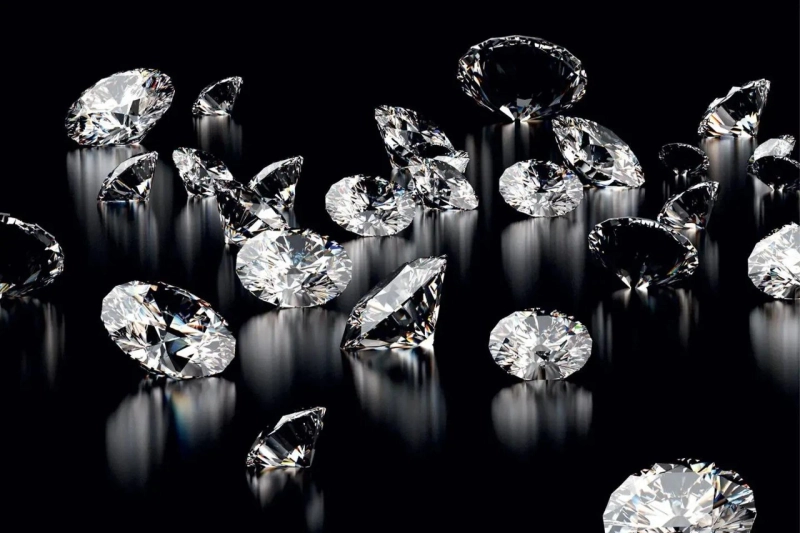Lab grown diamonds have become a sustainable and ethical alternative to mined diamonds in recent years. These man made diamonds are upending the traditional diamond industry by providing consumers with a more environmentally friendly and socially responsible option. If you're interested in
lab grown diamonds and want to learn everything there is to know about them, you've come to the perfect spot. In this complete guide, we'll look at
Insightful Blue Nile lab diamonds reviews, how they're manufactured, their benefits and drawbacks, and their impact on the jewelry market.r
What Are Lab Grown Diamonds?
r
Lab-grown diamonds, also known as synthetic or nurtured diamonds, are created in a laboratory instead of being extracted from the earth. Because they are composed of carbon atoms arranged in a crystal lattice, they possess the same chemical and physical properties as natural diamonds. This renders lab diamonds visually indistinguishable from their natural counterparts, even to most gemologists.r
How Are Lab Diamonds Made?
r
Lab made diamonds are created by simulating the conditions deep within the Earth's mantle, where natural diamonds are formed. There are two principal ways to cultivate diamonds in a laboratory:r
High-Pressure High-Temperature (HPHT): A small seed crystal, typically a natural diamond, is deposited in a carbon source and subjected to extreme heat and pressure. This procedure encourages the carbon atoms surrounding the seed to form a diamond crystal.
r
Chemical Vapor Deposition (CVD): CVD involves inserting a flat diamond seed in a chamber filled with carbon-rich gas. When the gas is heated, carbon atoms are deposited layer by layer onto the seed, eventually forming a diamond.
rBoth techniques require specialized equipment and controlled environments to ensure the growth of
high quality diamonds. It is essential to note that lab made diamonds can take weeks or even months to mature, depending on their size and quality.r
The Advantages of Synthetic Diamonds
rr
Ethical Sourcing: One of the best things about grown diamonds is that they come from a good place.
Laboratory created diamonds are made in a controlled and open setting, unlike mined diamonds, which are sometimes linked to unethical practices and wars.rrr
Environmental Sustainability: Mining natural diamonds can have terrible effects on the environment, such as the loss of habitats and water pollution. On the other hand, man made diamonds have a much smaller impact on the earth because they use fewer resources and release fewer greenhouse gases.rrr
Cost savings: Most of the time,
lab manufactured diamonds are cheaper than diamonds that come from nature. This can make them a good choice for people who want
highest quality diamonds but want to spend less money on it.rrr
Quality Control: They go through strict quality control measures when
manufactured diamonds are made. This ensures the quality is always the same and reduces the chance of impurities or flaws.rrr
Customization: Lab diamonds can be made to meet specific size, shape and quality needs. This makes it easier to make more unique jewelry.rrr
Transparency: This business is usually more open about where its diamonds come from and how they are made, which can give customers peace of mind that what they are buying is real and ethical.rr
The Drawbacks of Man Made Diamonds
rWhile
lab made diamonds have several benefits, they also have some disadvantages and restrictions:rrSize and Color Restrictions: Compared to natural diamonds,
synthetic diamonds are presently limited in size and color. Large, high-quality lab created diamonds are uncommon, and certain hues are difficult to imitate.rrDespite their identical chemical composition, lab diamonds are frequently perceived to have less intrinsic value than their natural counterparts. This perception may impact the resale value and sentimental attachment of certain purchasers.rrThe production of grown diamonds requires substantial energy, especially for the high-temperature processes involved. This may negate some of the environmental advantages.rrThe diamond industry has a long history of promoting natural diamonds as rare and valuable, making it difficult for lab made diamonds to acquire widespread acceptance.r
Lab Grown Diamonds vs. Natural Diamonds
rLet's compare lab made and natural diamonds in a few crucial areas to better appreciate the differences:rrrrProperties Comparisonr rrLab Diamondsr rrNatural Diamondsrrr rr
OriginrGrown in a controlled laboratory environmentrExtracted from the Earth's crustrrr rr
Environmental rr
ImplicationsrHave a lesser environmental impact since they use fewer resources and emit fewer emissions.rMining operations can have a substantial negative influence on the environment.rrr rr
Ethical ConsiderationsrBecause they are not related with conflicts or human rights violations, they are virtually free of ethical problemsrThese can be associated with immoral actions, such as "blood diamonds" from conflict zones.rrr rr
CostrLess expensive than natural diamonds.rMore expensive, particularly for high-quality stones.rrr rr
PersonalizationrCan be tailored to particular size, shape and quality specifications.rLimited by what nature has to provide.rrr rr
ScarcityrAs manufactured on demand, they are not necessarily rare.rValued for their scarcity and one-of-a-kindness.rrrr
The Future of Lab Grown DiamondsrrThe lab created diamond business has risen rapidly and its future appears bright. Here are a few noteworthy trends and developments to keep an eye on:rrMarket Acceptance: As customers become increasingly aware of the ethical and environmental difficulties associated with natural diamonds, demand for lab made diamonds is projected to rise.rrTechnological Progress: Ongoing research and development activities are likely to improve the size, color, and quality of lab diamonds, making them more competitive with natural diamonds.rrPartnerships with Jewelry Brands: Many established jewelry brands are embracing and incorporating man made diamonds into their collections. This pattern is likely to continue as consumer demand rises.rrSustainable Practices: To lessen their environmental impact, several laboratory diamond producers are investing in renewable energy and carbon offset efforts.rrEducation and openness: Industry stakeholders are working to educate customers about the advantages of synthetic diamonds and to improve supply chain openness.r
How to Choose Between Lab Created and Natural Diamonds
rThe choice between lab and natural diamonds ultimately comes down to personal preferences and values. Here are some things to think about when making your decision:rr
Budget: Because lab diamonds are often less expensive, they are an appealing option for people on a tight budget.r
Ethical Concerns: If you have strong ethical issues about the diamond industry's influence on the environment and human rights, man made diamonds may align more with your principles.r
Size and Quality: Consider the size, color, and quality of the diamond you choose. Natural diamonds have more customisation options than grown diamonds, especially for larger stones and certain colors.r
Sentimental Value: Some people favor natural diamonds for their sentimental value, whilst others may cherish the uniqueness and personalization of lab created diamonds.rrIf environmental sustainability is important to you, lab diamonds have a lower carbon footprint.r
Conclusion
rLab-grown diamonds are revolutionizing the jewelry industry by providing a more sustainable, ethical, and customizable alternative to mined diamonds. Although they may not completely replace natural diamonds, their market share continues to increase as consumers become more ethically and environmentally conscious.rrWhether you choose a lab or natural diamond, making an informed decision that reflects your values and preferences is essential. As the lab grown diamond industry evolves and innovates, it will be intriguing to observe how it influences the future of the diamond market and contributes to a more sustainable and accountable jewelry industry.



